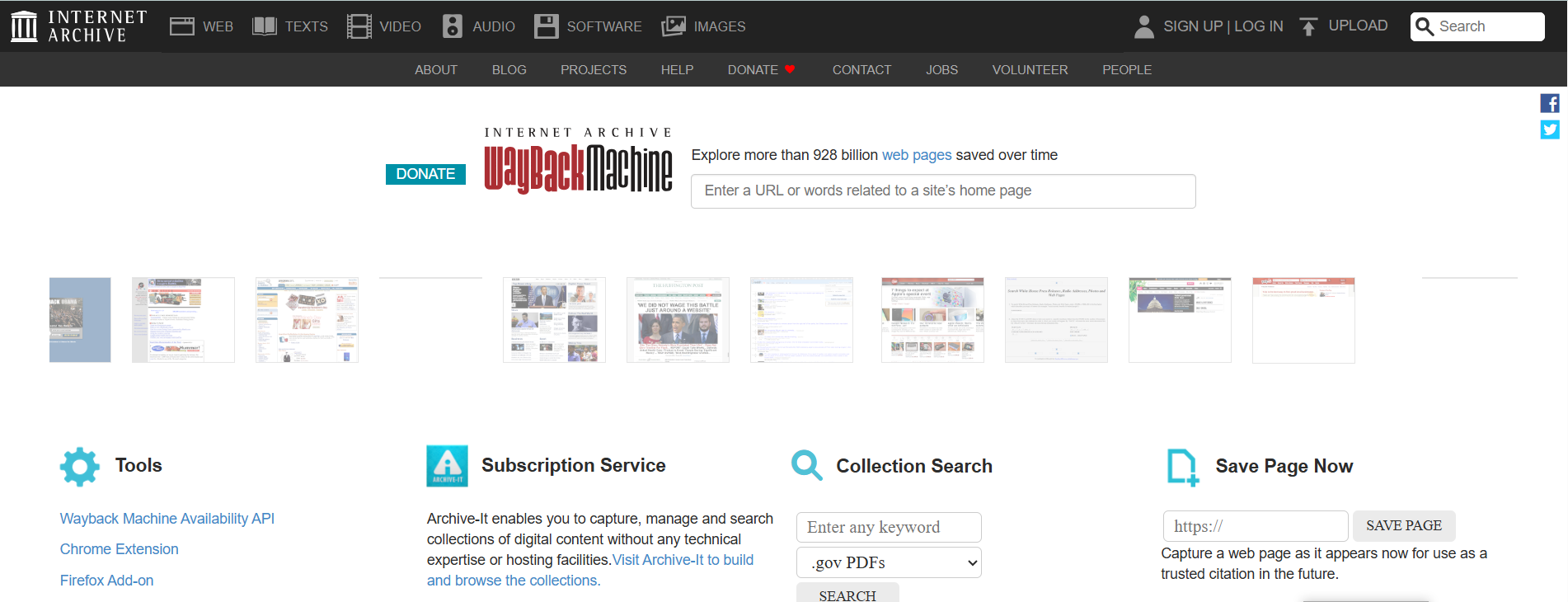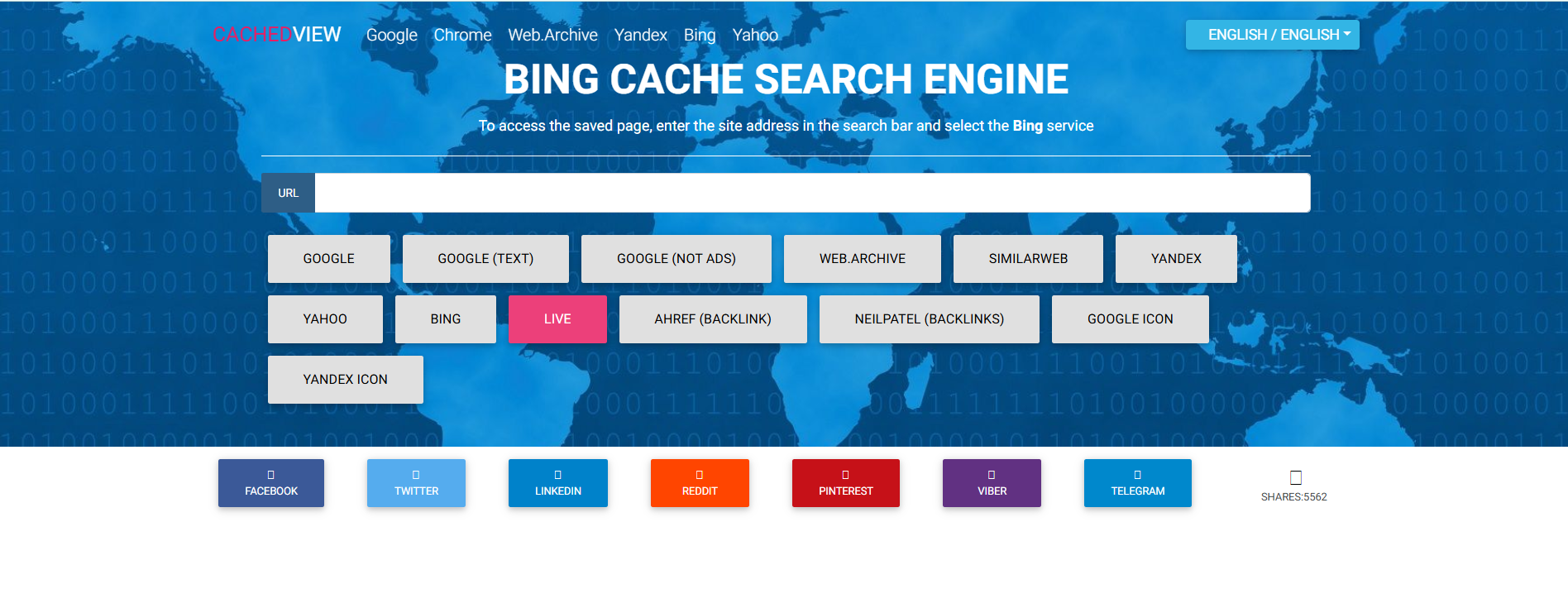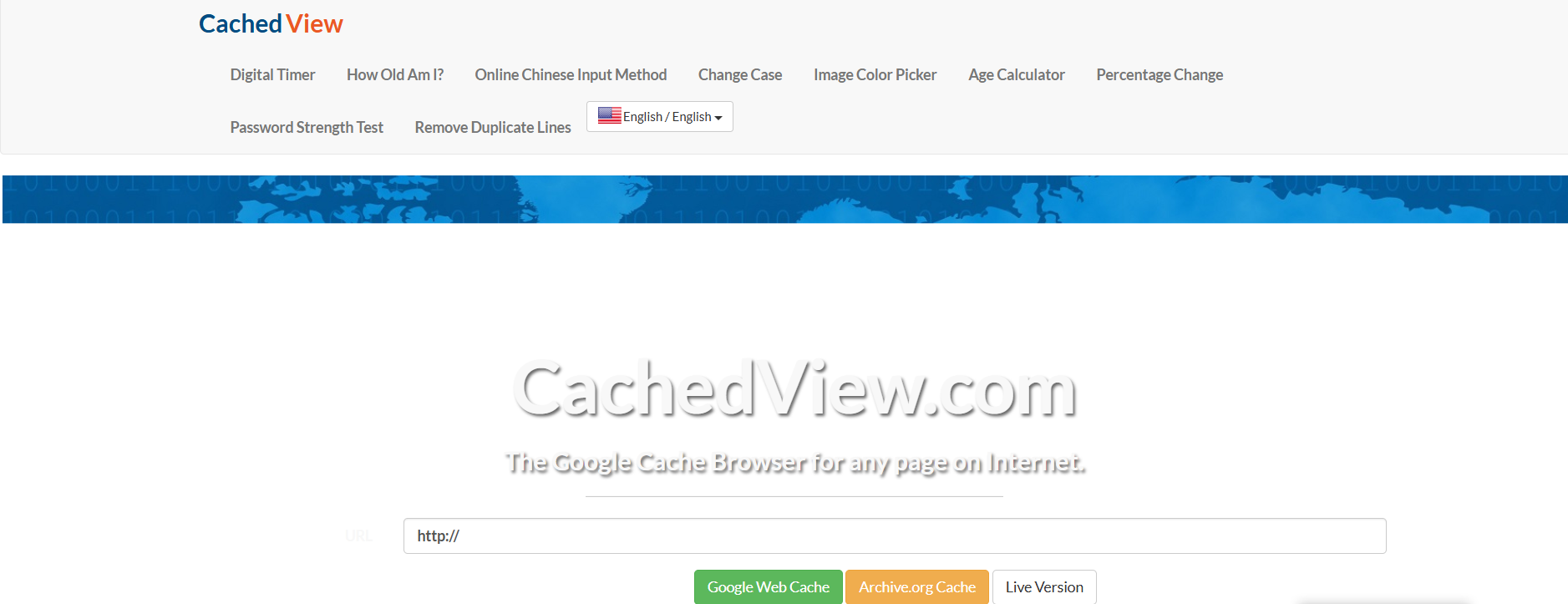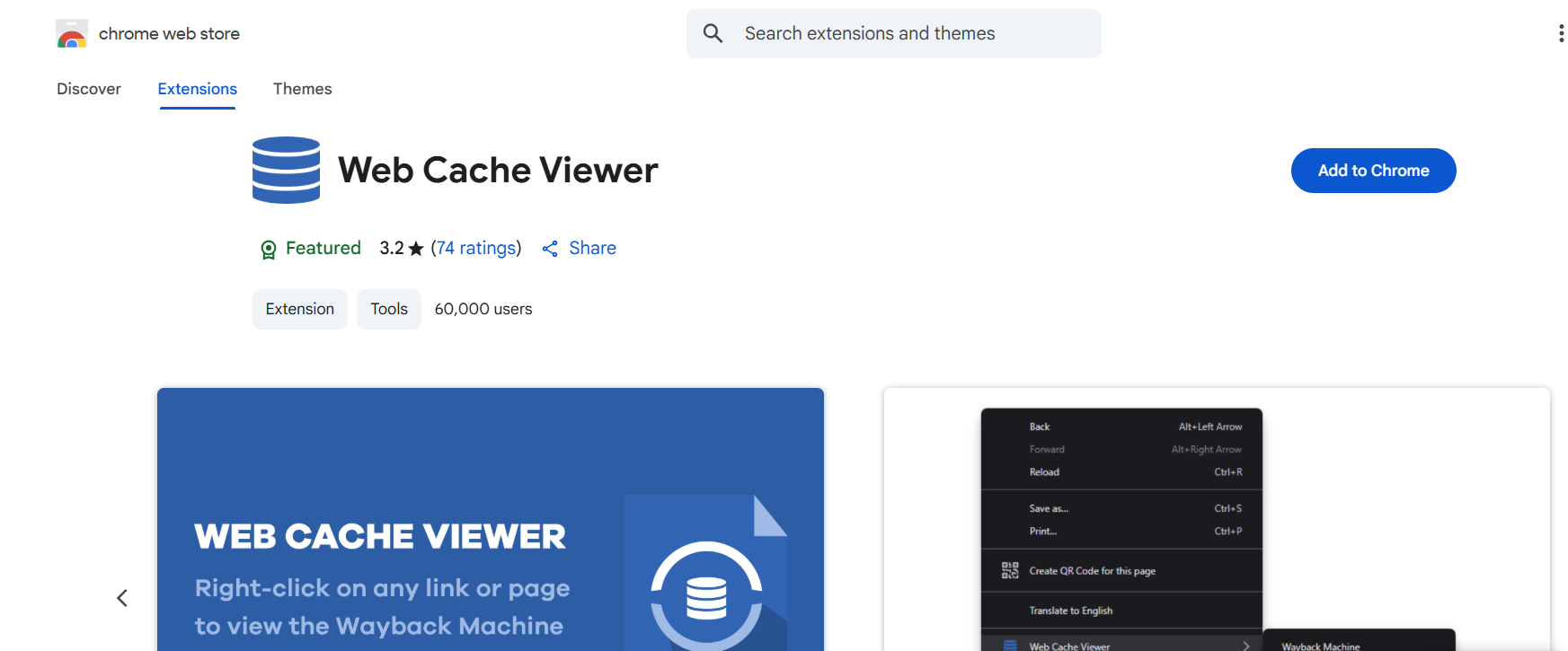Since Google has ended its cached page feature, marketers and SEOs are finding it harder to access older versions of web pages.
Marketers and SEOs often relied on Google Cache to check previous content, monitor changes, and recover removed information.
With the removal of the Google Cache feature, finding old versions of web pages has become more challenging.
But don’t worry, there are still reliable tools and ways out there that can help you view cached pages and keep your workflow on track. Let’s dive into the best Google Cache alternatives.
7 Best Alternatives to Google Cached Pages for SEOs and Marketers
If you are looking to recover lost content or check page history after Google Cache’s removal, these tools are your best options.
The following alternatives make it easy to view cached web pages, even after Google decided to drop its caching feature.
Wayback Machine (archive.org)
The Wayback Machine is a popular internet archive tool that stores snapshots of websites across different dates.
It’s ideal for viewing how a page looked months or even years ago. Just enter the URL, and you’ll get a calendar with available archive dates.
It’s widely used for research, legal reference, and retrieving deleted or changed content.
How to use Wayback Machine?
- Visit archive.org/web.
- Enter the URL of the website/page you want to view.
- Click “Browse History.”
- Choose a year from the timeline.
- Select a date on the calendar to view that version.
Benefits of Wayback Machine
- Access deleted or outdated content.
- Research how a website evolved over time.
- Use as legal evidence or citation in disputes.
- See older versions of competitor sites.
- Helps retrieve lost information during server issues.

Bing Cache
Bing also stores cached versions of websites, though not as comprehensively as Google. To use it, just type cache:<URL> into Bing’s search bar.
This method is helpful when Google’s cache isn’t available or updated. It’s useful for quick retrieval of recently updated or unavailable pages, especially if you’re troubleshooting downtime or content removal.
How to Use Bing Cache:
- Open Bing.com.
- Type cache: followed by the page URL in the search bar (for example, cache:example.com).
- If available, a cached version will open.
Benefits of Bing Cache:
- Offers a quick alternative if Google Cache is down.
- Useful during website downtime.
- Sometimes shows fresher content than Google.
- Helpful for verifying recent changes or deletions.
- Simple one-step access without third-party tools.

Coral CDN (Content Distribution Network)
Coral CDN allows you to view cached copies of websites by adding .nyud.net to the end of the domain. For example, example.com.nyud.net.
It’s a peer-to-peer caching system meant to reduce web traffic load and make high-demand pages available during server overloads or DDoS attacks. While it’s less active now, it still works occasionally for basic page access.
How to Use Coral CDN?
- Copy the URL of the page you want to check.
- Add .nyud.net to the domain (e.g., example.com.nyud.net).
- Paste it into your browser.
- Hit Enter and wait for the cached page to appear.
- View or extract the required information.
Benefits of Coral CDN:
- Offers page access during server overload.
- Bypasses traffic restrictions or high latency.
- Helps access popular pages during DDoS attacks.
- No tools or sign-up needed.
- The peer-to-peer model reduces the original server load.
WebCite (webcitation.org)
WebCite was designed for academic use, allowing users to cite archived versions of web pages.
While it’s not actively maintained today, existing archived links are still accessible.
It helped preserve references in journals, research papers, and blogs by storing content that might later disappear or change, useful for preserving citation accuracy.
How to Use WebCite?
- Go to webcitation.org.
- If you have an existing WebCite link, paste it in the search bar.
- Press Enter to retrieve the snapshot.
- Use archived content for citation or reference.
- Note: New submissions may not work due to inactivity.
Benefits of WebCite:
- Preserves academic and scholarly references.
- Ensures research links don’t break over time.
- Helps cite static versions of dynamic content.
- Was widely accepted in journals and publications.
- Maintains citation integrity even if the original site disappears.

Archive.today / Archive.ph
Archive.today (also accessible via archive.ph or archive.is) captures a real-time snapshot of a webpage. It’s useful for preserving content before it gets changed or removed.
You just paste the URL, and it creates a static archive. Unlike the Wayback Machine, it preserves a single version, but it loads fast and bypasses paywalls or login screens in many cases.
How to Use Archive.today?
- Visit archive.ph or archive.today.
- Input the URL of the page you wish to archive or view.
- Click “Save” to create a snapshot or use search to access an existing one.
- Wait for the snapshot to load.
- Use or share the static page.
Benefits of Archive.today:
- Captures live content immediately.
- Bypasses some paywalls and login pages.
- Pages load faster than many alternatives.
- Keeps exact layout and design intact.
- Shareable with a permanent link.
CachedView (cachedview.com)
CachedView gathers cached pages from various sources like Google Cache, Archive.org, and Coral CDN in one place.
You enter a URL, and it gives you access to all available cached versions from these platforms. It’s a convenient option if you’re unsure which service might have the page archived.
Perfect for marketers, journalists, and researchers who need fast content comparisons.
How to Use CachedView?
- Visit cachedview.com.
- Enter the URL of the page for view.
- Click the button to search cached versions.
- Choose between Google Cache, Archive.org, or Coral CDN.
- View the cached version of the page.
Benefits of CachedView:
- All cache sources in one place.
- Great fallback when one source fails.
- Ideal for quick SEO or content recovery work.
- Saves time by avoiding manual checking.
- Can show different versions from multiple archives.

Browser Cache / Chrome Extensions (e.g., Web Cache Viewer)
Several browser extensions help you access cached pages directly from your browser.
For example, “Web Cache Viewer” for Chrome lets you right-click on a link and choose to view cached versions from Google or Archive.org.
This is useful for SEOs, content analysts, or developers who need to see page versions without switching tabs or tools.
How to Use Browser Cache Chrome Extensions?
- Go to the Chrome Web Store and install “Web Cache Viewer” or a similar extension.
- Right-click on any link or webpage.
- Select “View Cached Version.”
Choose from Google Cache or Archive.org. - The cached version opens in a new tab.
Benefits of Browser Cache Chrome Extensions:
- Directly access cached pages from your browser.
- Quick and simple for daily use.
- Ideal for SEOs and content reviewers.
- Works without visiting external sites manually.
- Often allows access to multiple cache sources.

Why does Google no longer show cached pages?
Google no longer shows cached pages due to a combination of factors aimed at improving web practices and user experience. Here are the key reasons:
Shift Toward Fresh Content: Google prioritizes real-time, up-to-date content to deliver the most relevant information to users, rather than relying on older cached versions of websites.
Mobile-First Indexing: This change supports Google’s mobile-first approach, ensuring that the mobile versions of websites are always current and accessible.
Security and Privacy Concerns: Removing cached pages helps reduce the risk of displaying outdated or sensitive information, addressing potential privacy issues.
Encouraging Better Site Management: Google aims to push website owners to maintain real-time content and avoid relying on cached versions, which could mislead users.
Simplification of Web Processes: Google’s decision aligns with a broader trend of simplifying web operations, focusing on real-time crawling, indexing, and content delivery instead of preserving static, older versions of web pages.
The Bottom Line
Google’s cached pages removal has changed how users access old content, but there are still plenty of alternatives like the Wayback Machine.
These tools and methods allow users to access older versions of websites, helping digital marketers, SEOs, and researchers retrieve valuable content.
The platforms mentioned in the article provide an efficient way to retrieve past content, helping SEOs, marketers, and researchers stay productive while adapting to changes in Google’s indexing practices.

